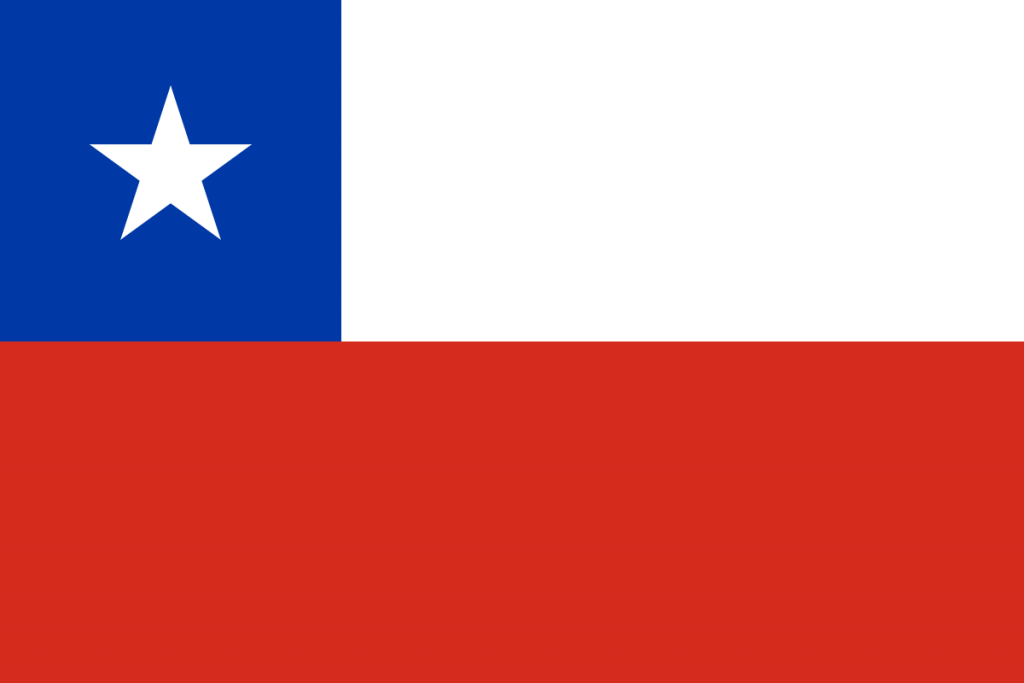The flag of Chile is approaching its bicentenary, having been adopted on 18th October 1817 – roughly five months before independence from Spain was declared. Only the flags of Denmark (1370), the Netherlands (1572), U.K. (1606) and U.S.A. (1777) are older by adoption date.
Chile’s flag, known as La Estrella Solitaria (The Lone Star) is extremely similar to the flag of the Lone Star State, Texas. The only difference is Texas’ flag has a larger blue area and was adopted on 25th January 1839 by the then Republic of Texas.
José Ignacio Zenteno, the Chilean Minister of War during their war of Independence with Spain, is credited with creating Las Estrella Solitaria, but exactly who designed it remains a subject for debate. It was either Spanish-born soldier Antonio Arcos, or, Gregorio de Andía y Varela.
The red of Chile’s flag represents the blood spilled for independence, blue: the sky and Pacific Ocean, white: the snow-covered Andes, while the star either symbolises Chile’s independence, its status as a Unitarian Republic, or a guide to progress.
Bonus Fact: Until October 2011 it was prohibited to use the flag in public without prior approval. This rule was rarely enforced.
Alex Crouch is a 2014 journalism graduate from Southampton Solent University. He has followed Formula One since before he started infant school, was a Games Maker during the London Paralympics and saw Pink Floyd reunite for one song at The O2 in London. Links: Twitter, blog, YouTube. Alex is an accredited Flag Institute journalist.


